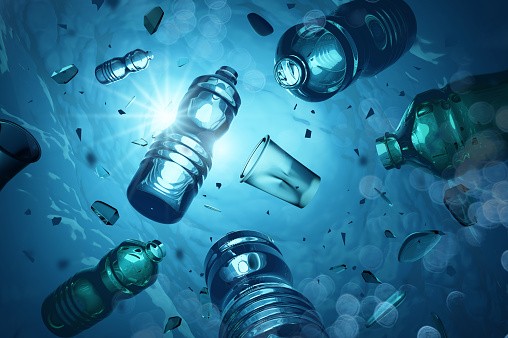
Pollution Of The Ocean By Plastic And Trash
Garbage has been discarded into the oceans for as long as humans have sailed the seven seas or lived on seashores or near waterways flowing into the sea. Since the 1940s, plastic use has increased dramatically, resulting in a huge quantity of nearly indestructible, lightweight material floating in the oceans and eventually deposited on beaches worldwide.
As the graph shows, trash items encompass a variety of materials. Sources of marine debris include: Items that are brought to the beach and left there by beachgoers; Garbage deliberately or accidentally discarded by ships at sea or from offshore oil platforms; and Material carried to sea by rivers and estuaries , especially from large coastal cities. City storm sewers are a significant source of solid waste entering the sea from land sources.
Effects on Wildlife
Aside from its unsightly appearance and potential impact to human health, marine debris has harmful effects on wildlife. Fish, birds, marine mammals, reptiles, and other animals can become entangled in discarded or lost nets that continue to do what they were designed to do—catch living animals—but now they catch them indiscriminately, a process called "ghost fishing." Items unintended for fishing become traps.
Woven plastic onion sacks floating in the sea have entrapped endangered hawksbill sea turtles. Plastic bags become invisible to birds diving for fish and are skewered by the birds' sharp bills, usually resulting in their death. Plastic is also mistaken for food and is eaten at sea by birds, turtles, and even whales. This can choke them, poison them, or simply make them think they are full when this "food" has no nutritional value. Many marine animals get entangled in fishing lines used by recreational anglers.
Efforts to Reduce Debris
Unsightly littered beaches gained public attention in the early 1980s and efforts were made to find out how much garbage there was, where it came from, and what its effect was on ocean wildlife. Medical waste and other floatable debris washing ashore at public beaches of the eastern United States, primarily in New York and New Jersey, was a particularly disturbing and highly publicized aspect of ocean pollution by municipal solid waste.
The incidents in New York and New Jersey spurred the 1988 passage of the federal Medical Waste Tracking Act (which has since transferred to individual states) as well as subsequent federal and state laws designed to better regulate the handling, treatment, transportation, and disposal of medical waste. Since the early 1990s, medical waste in U.S. coastal waters has faded from public view, and is not considered a public or environmental health threat associated with ocean dumping, primarily because it comprises only a small percent of municipal solid waste items found in the ocean. However, plastic and trash remain major concerns due to their widespread presence.
Scientists and environmental groups since the 1980s have more closely addressed the problem of marine debris and its effect on public health and wildlife. The general public has helped in organized beach cleanups using data sheets to record the types and numbers of items found. Cleanups were at first limited to beaches bordering the United States ocean coastlines, but soon international efforts were organized, and cleanups were also done along riverbanks, lakeshores, marinas , and even by divers to recover submerged items along jetties and fishing piers.
Persistent Problem.
After the United States ratified MARPOL Annex V in 1987, the quantity of marine debris decreased, but has increased again in recent years. Solutions include:
- Improving the general public's awareness, concern, and attitude towards littering;
- Reducing the use of plastic and other materials for disposable packaging; and
- Enforcing existing laws, especially at sea, to punish habitual litterers.
As the twenty-first century opened, marine debris continued to wash ashore on beaches around the world, including the United States. There has been some reduction in the quantity of trash on America's ocean beaches, partly because of adherence to the law, partly because of self-imposed company rules, and partly owing to increased public awareness. Much of the credit for this must be given to the beach cleanups that have given the public a first-hand look at the problem. Even so, marine mammals, reptiles, birds, and other ocean life continue to sustain injuries from ingesting or becoming entangled in plastic debris and fishing gear.
Executive Director / Founder 501c3 Plastic Beach
1yThis is a huge issue, and one that is very hard to address as waste management is the key; and that's not a 'sexy' issue that is easily hyped. I am the founder of a SoCal non-profit, Plastic Beach, that is presently diverting over 1,000 lbs of LDPE4 out of our community's retail waste stream each month, but its such a hard concept to sell. Most people know that plastic waste is an issue, but then conversely don't want to have to pay to fix it. So if anyone wants to help a positive change, please consider donating to Plastic Beach, or if you are in the San Diego, CA area - contact us so we can work with you to recycle your LDPE4 and keep it out of our oceans. Matthew Clough Founder of Plastic Beach, 501c3
Professor
1yPeople need more awareness about this plastic hazardous pollution. Also more strict regulation